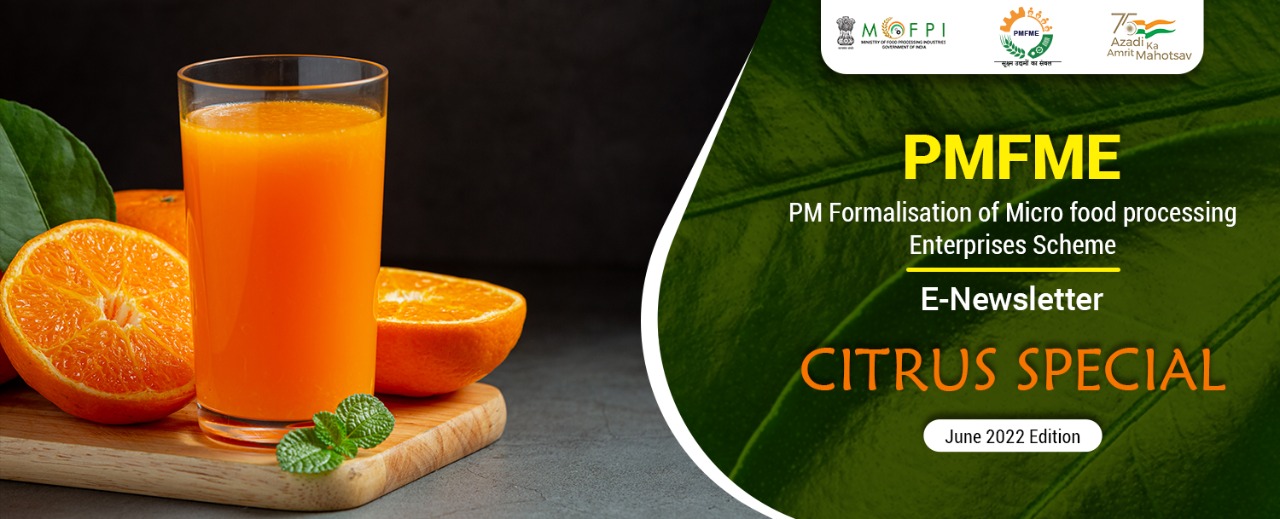

Citrus refers to a group of fruits belonging to the Rutaceae family with the genus Citrus, Poncirus and Fortunella and sub-family Aurantoideae. There are 130 genera under the Rutaceae family. Citrus constitutes a major group of fruits. The fruit type of citrus is Hesperidium also known as a modified berry. The edible portion consists of juicy placental hairs. Citrus fruits are non-climacteric in nature. They are juicy fruits that have a fairly thick rind with pulpy flesh and are divided into segments. They are thorny evergreen trees and shrubs which grow in warm regions. The major leading states of India for the production of citrus are Maharashtra, Andhra Pradesh, Telangana, Madhya Pradesh, Punjab, and Assam. Some examples of citrus are orange, lime, citron, lemon, rough lemon, grapefruit, pomelo, mandarin, citrange, kumquat, tangelo, etc. Citrus are non-climacteric fruits and hence are perishable in nature so they cannot be stored for a satisfactory duration of time under natural conditions.

Fig. 1. Nanotechnology Application in Citrus
Nanotechnology is the branch of science that deals with the understanding and control of matter at the dimensions of about 1-100nm. A number of factors contribute to the deteriorating shelf life of citrus such as bacterial infections and transformational injury even though they have very high nutritional value. So nanotechnology techniques have been utilized for the protection and enhancement of the shelf life and quality of citrus such as:
Nano oil emulsion: It is the most effective technique for increasing quality and shelf life. Chitosan can be used for the coating to prevent microbial infestations on the surface of the fruit. It affects physiological and biological processes like respiration by inhibiting the transfer of moisture, oxygen and reduce surface infection.
Nanocoating: Sprayable nanocoating techniques are made from organic plant-derived polyphenols to extend the shelf life of citrus. Plant-derived polyphenols have both antioxidant and anti-cancer properties and preservation properties so the coating can preserve the color and quality of the fresh fruit. This technique also prevents the deformation of products and cross-contamination of the coating solution.
Nanotech application of Hexanal: It is a natural plant extract that slows the ripening by three weeks and doubles the shelf life of citrus. The three key factors for the process are hexanal concentration, time of application prior to harvest and the season. Smart system packaging slowly releases hexanal to extend shelf life and prevent a market glut.
Nano-additives: Nano-additives such as color, flavors, preservatives, and supplements are added to enhance flavor, and increase shelf life and nutritional value.
Nano-packaging: It is an environment-friendly, flexible, stable, detectable trace contaminant with a strong antibacterial agent which is able to maintain the sensory, photochemical, and physiological quality of the fruit. Good packaging material has lower relative humidity, prolonged strength, and a high oxygen transmission rate which is synthesized by blending polyethylene with nano powder. The LDPE bags are suitable for the packaging of citrus fruits since they contain 1% inorganic antimicrobial agents. Even if it does not enhance color, it inhibits declining fruit firmness and weight loss, decreasing the decay rate, anthocyanin and malondialdehyde contents, and reduced disease development and post-harvest loss.
(Content shared by Dr. Yengkhom Disco Singh and Suriya Naorem, Department of Post-Harvest Technology, College of Horticulture and Forestry, Central Agricultural University, Pasighat, Arunachal Pradesh)